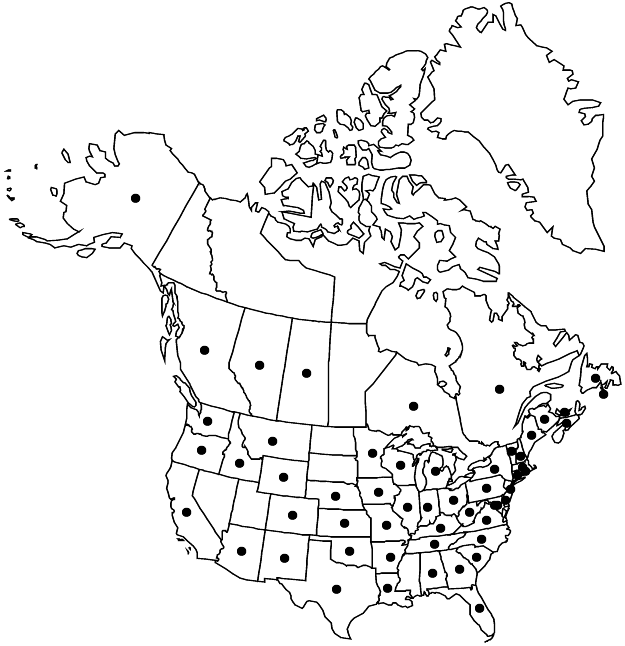Monotropa hypopitys
Sp. Pl. 1: 387. 1753 (as hypopithys) ,.
Inflorescences usually secund racemes, rarely solitary flowers, 5–32 cm; axis yellowish to orange or reddish. Pedicels nodding at anthesis, erect in fruit, finely hairy or glabrous, sometimes glandular-hairy. Flowers: sepals absent or 4–5, not similar to subtending bracts, spatulate to elliptic, 7–12 × 1–5 mm; petals 4–5, yellowish to orange or reddish, oblong, 8–17 × 4–8 mm, base narrowly saccate, margins ciliate to erose, apex acute to rounded, adaxial surfaces often hairy; nectary lobes 8–10, (paired), stout, not elongate or curved-cylindric; stamens 8–10; filaments sparsely hairy; anthers horizontal at anthesis, horseshoe-shaped, sacs of equal size; ovary 4–8 × 3–6 mm, usually hairy; style 2–10 × 1–2 mm, sparsely hairy; stigma umbilicate, 1.5–3 mm diam., often subtended by ring of crowded hairs. Capsules 4–5-segmented; segments often deciduous after seed dispersal, thin, 6–10 × 4–8 mm, without connecting, pinnate, vascular-bundles when open. Seeds 0.5–1 mm, mostly membranously winged. 2n = 48.
Phenology: Flowering spring–fall.
Habitat: Moist to mesic or dry, mixed-deciduous and coniferous forests
Elevation: 0-4300 m
Distribution

St. Pierre and Miquelon, Alta., B.C., N.B., Nfld. and Labr. (Nfld.), N.S., Ont., P.E.I., Que., Sask., Ala., Alaska, Ariz., Ark., Calif., Colo., Conn., Del., D.C., Fla., Ga., Idaho, Ill., Ind., Iowa, Kans., Ky., La., Maine, Md., Mass., Mich., Minn., Mo., Mont., Nebr., N.H., N.J., N.Mex., N.Y., N.C., Ohio, Okla., Oreg., Pa., R.I., S.C., Tenn., Tex., Vt., Va., Wash., W.Va., Wis., Wyo., Mexico, Central America (Guatemala), Europe, c, e Asia
Discussion
Selected References
None.
Lower Taxa
"thin" is not a number.